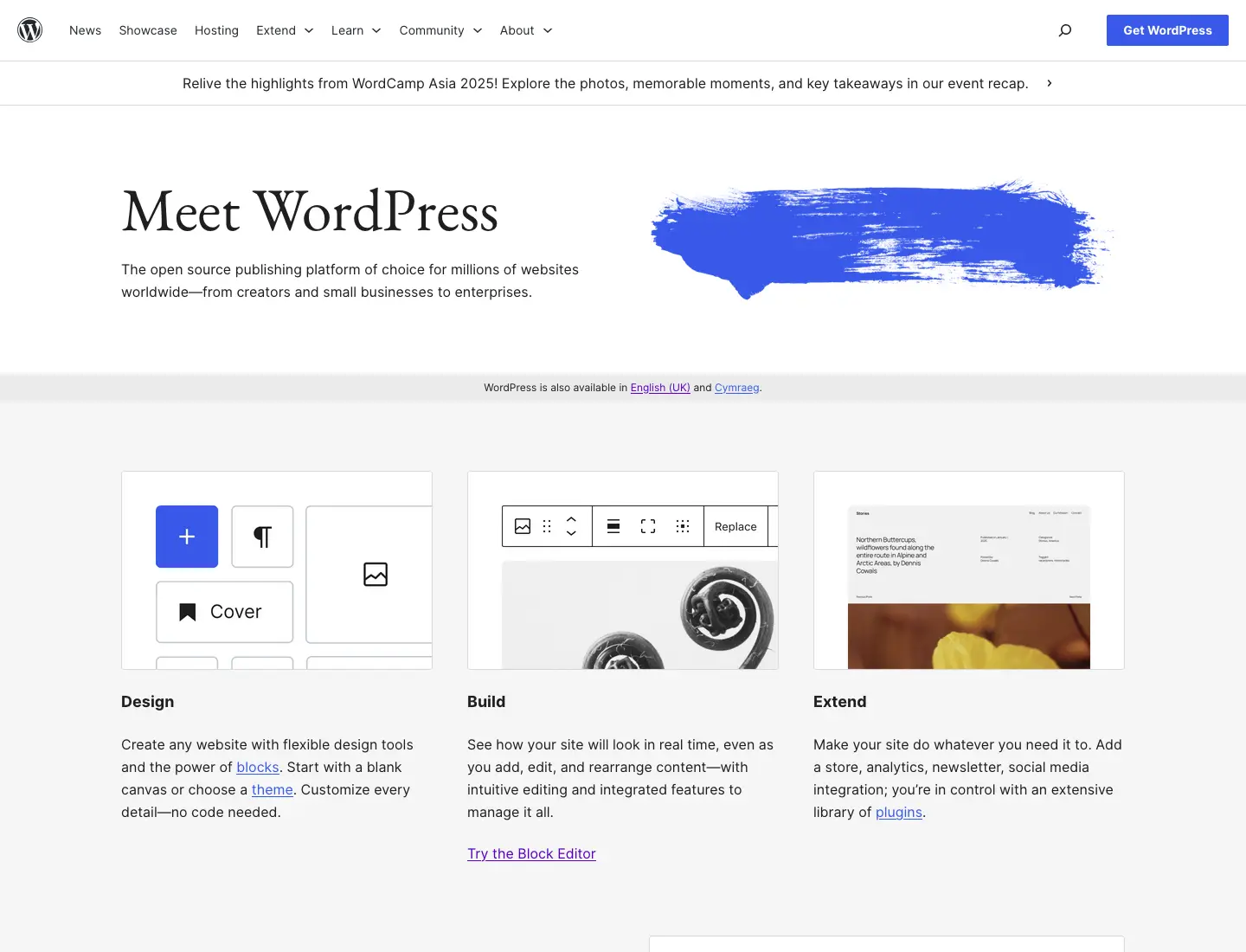If you’re reading this and you live and breathe digital marketing, or you’re breaking into the industry, having a great-looking front end to your website is only part of the equation. What lies beneath—your website’s infrastructure—plays just as important a role in performance, scalability, SEO, and, ultimately, user experience. It’s a subject well worth knowing!
The LAMP stack is one of the most widely used open-source web development stacks and forms the backbone of countless content management systems (CMS), landing pages, and data-driven applications.
You don’t have to be a web developer to know how the LAMP stack works inside and out, but knowing the general gist as a digital marketer will help you to make smarter decisions about hosting, development, site optimisation, and even chatting with internal development teams or web design agencies like ours. Whether you’re deploying a WordPress site, hosting a simple landing page, or working with agency partners, LAMP is a foundation worth knowing.
This Article Will Cover:
- What Is the LAMP Stack?
- History and Evolution of the LAMP Stack
- How the Components Work Together
- Why Use LAMP Stack? Key Advantages
- Everyday Use Cases for Marketers
- LAMP Stack Alternatives and Comparisons
- Challenges and Limitations of LAMP
- Hosting LAMP: Deployment and High Availability
- So Is LAMP Still Relevant for Today’s Marketer?
What Is the LAMP Stack?
The LAMP stack is a collection of open-source software used to develop and run dynamic websites and applications. LAMP is an acronym for:
- Linux – The operating system powering the server
- Apache – The web server software handling HTTP requests
- MySQL – The relational database management system (RDBMS) used to store content and user data
- PHP (or Perl/Python) – The server-side scripting language that creates dynamic content
Together, these components form a robust, flexible platform for building high-performance websites. When a user accesses a site, Apache receives the request, PHP processes the backend logic (often with MySQL queries), and the content is served to the user’s browser via HTML.
LAMP is known for its stability, security, and ease of customisation, making it the foundation for many well-known platforms like WordPress (the one we love the most), Laravel, Joomla, Drupal, and Magento (the ones we try to avoid).
History and Evolution of the LAMP Stack
The LAMP stack emerged in the late 1990s as open-source software became more widely adopted. Developers sought a reliable, cost-effective way to build web applications without the licensing fees and complexity of proprietary systems.
Its success was accelerated by the rise of early CMSs and web applications that were developed specifically for LAMP environments. By the early 2000s, platforms like WordPress (2003), Joomla (2005), and Drupal (2001) had fully embraced LAMP.
Over the years, the LAMP stack has adapted to changing web technologies, supporting modular upgrades and alternative configurations like LEMP (with NGINX) and LAPP (with PostgreSQL). Despite the emergence of newer stacks, LAMP remains a dependable choice for powering millions of websites worldwide.
How the Components Work Together
Let’s break down how the LAMP components function in tandem:
- User Request: A user enters a URL in their browser.
- Apache: Acts as the web server, receiving and handling the HTTP request.
- PHP: Executes server-side scripts to generate dynamic content, often querying a MySQL database.
- MySQL: Stores and retrieves data like blog posts, product listings, and user details.
- Linux: Supports the overall environment, ensuring everything runs securely and efficiently.
For example, when a user visits a WordPress blog post, Apache processes the request, PHP retrieves the post content from the MySQL database, and Linux serves as the base layer enabling it all.
Why Use LAMP Stack? Key Advantages
The LAMP stack—incorporating Linux, Apache, MySQL, and PHP—is a popular choice for building and hosting web applications. Its lasting popularity stems from a combination of cost-efficiency, reliability, and adaptability. Below are the key advantages that make LAMP an attractive option, especially for marketers and developers who want performance without overspending.
A. Open-Source and Free
All components are free to use with no licensing fees. This significantly reduces infrastructure costs—an important factor for marketers managing budgets.
B. Platform Independence
LAMP runs on almost any server, making it easy to move between shared hosting, VPS, or cloud platforms like AWS and DigitalOcean.
C. Security and Stability
Each component is well-established and regularly updated. Apache and MySQL, in particular, have long track records for security and resilience.
D. Flexibility and Scalability
Developers can enhance LAMP with caching tools (e.g. Redis, Memcached) or alternative components (NGINX instead of Apache). You can start small and scale up quickly.
E. Modular Customisation
You’re not locked in—PHP can be swapped for Python or Perl; Apache for NGINX; MySQL for MariaDB or PostgreSQL. This modularity lets marketers and developers tailor the stack to specific needs.

Everyday Use Cases for Marketers
Marketers often interact with websites built on the LAMP stack without realising it. Here’s how it applies to common scenarios:
- Running WordPress or Joomla websites
- Hosting Magento or WooCommerce eCommerce platforms
- Launching custom campaign landing pages with backend tracking
- Storing lead data or contact form submissions in MySQL databases
- Hosting internal tools or CRMs developed in PHP
LAMP’s compatibility with widely used marketing tools and CMS platforms makes it highly relevant for content teams, SEO strategists, and digital campaign managers.
LAMP Stack Alternatives and Comparisons
Several alternative stacks have emerged to suit specific development needs:
| Stack | Components | Key Differences |
|---|---|---|
| LEMP | Linux, NGINX, MySQL, PHP | Faster static delivery with NGINX replacing Apache |
| MEAN | MongoDB, Express.js, Angular, Node.js | Full JavaScript stack with NoSQL database |
| LAPP | Linux, Apache, PostgreSQL, PHP | PostgreSQL instead of MySQL for complex queries |
| WAMP | Windows, Apache, MySQL, PHP | Windows-based development environment |
| XAMPP | Cross-platform, Apache, MariaDB, PHP, Perl | Pre-packaged local dev environment |
When to use LAMP:
- Ideal for CMS-driven websites, traditional blog or content-based platforms, small to mid-size eCommerce
- Choose MEAN for real-time or single-page JS apps
- Choose LEMP if you need faster static content serving and can configure NGINX
Challenges and Limitations of LAMP
Despite its strengths, LAMP does come with a few caveats:
- MySQL scalability: Under heavy load, MySQL may require read-replicas or clustering
- Outdated for some modern apps: Not optimal for highly interactive single-page applications (SPAs)
- Maintenance complexity: Server configuration and updates can be complex for non-developers
- Legacy code risk: Some older apps built on LAMP use outdated PHP versions or deprecated libraries
However, most of these challenges can be mitigated with managed hosting services, regular updates, and use of modern PHP frameworks.

Hosting LAMP: Deployment and High Availability
Marketers working with developers or web design agencies like ours often need to understand where and how LAMP applications are hosted. Here are some options:
- Shared Hosting: Affordable, basic option ideal for simple sites (e.g. Bluehost, SiteGround)
- Cloud Hosting / VPS: Scalable environments like AWS, DigitalOcean, Linode give greater control and performance
- Control Panels: cPanel, Plesk, and Webmin make server management easier without deep command-line knowledge
High-Availability Considerations
- Load balancing with Apache
- Database replication and backups
- Integrating caching layers like Varnish or Redis
- Using services like Cloudflare for DNS redundancy and DDoS protection
One-Click Installs and LAMP Made Simple
Most modern hosting providers now offer one-click LAMP stack installations, dramatically simplifying the deployment process. This is especially useful for marketers who want to launch a website quickly without deep server-side expertise.
Many hosts also provide a one-click WordPress on LAMP install option if you plan to use a CMS like WordPress. This bundles the full LAMP stack with the CMS, so there’s no need to configure Linux, Apache, MySQL, or PHP manually. For technically confident marketers, this approach opens the door to managing more of the website build themselves without needing a developer on hand 24/7 for setup.
We cover this topic further in our article on best managed WordPress hosting in the UK, which explores hosts that combine LAMP infrastructure with marketer-friendly tools and support.
So Is LAMP Still Relevant for Today’s Marketer?
Absolutely. Although tech has moved on, and there are better options today, the LAMP stack continues to power the web behind the scenes, especially for the platforms and tools that marketers use daily. Its open-source nature, flexibility, and vast community make it a solid choice for hosting everything from CMS-powered content sites to custom marketing dashboards.
For technical marketers, understanding LAMP isn’t about becoming a sysadmin. It’s about being better informed when deciding on hosting, collaborating with developers, and troubleshooting performance or integration issues.
By gaining insight into foundational technologies like LAMP, we hope we can in some way help marketers, whom we frequently work with within the larger B2B brands, to drive more conversations and deliver a better-performing digital experience for their team and end users or customers. It’s our little way of giving back.
If you’re still confused, speak to one of our experienced web developers. We’ve been around for almost 17 years as an agency (as of writing this in 2025) and in the industry for way longer, so we know our stuff!



